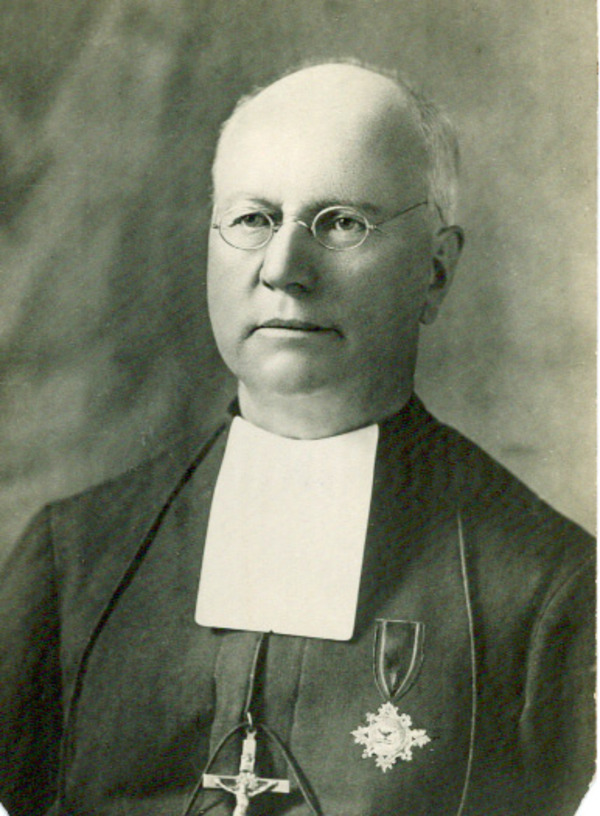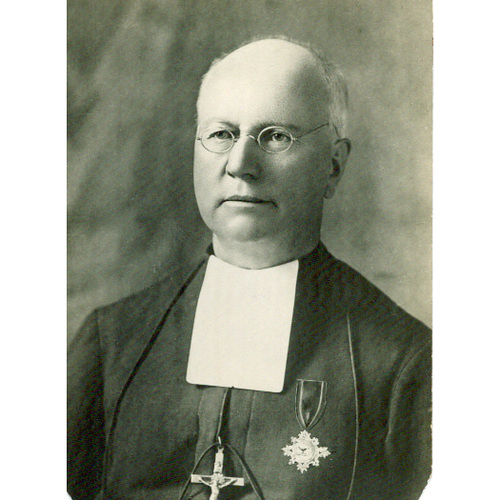
Source: Link
BRUYÈRE, RÉGIS (named at birth Jean-Claude-Régis), named Brother Césidius, first superior of the Marist Brothers in North America; b. 5 Aug. 1845 in Lapte, France, son of Claude Bruyère and Marie Joubert, innkeepers and peasants; d. 24 Sept. 1933 in Iberville (Saint-Jean-sur-Richelieu), Que.
Régis Bruyère inherited from his ancestors a certain physical robustness and an unshakeable faith. During the French revolution, for instance, his grandparents had sheltered a non-juring priest, an act for which they were imprisoned. When Régis was born, his parents were running a small inn in the village of Lapte, near Yssingeaux in the Haute-Loire region. Régis attended the village school, which was led by the Brothers of the Christian Schools. Influenced by a recruiter for the Marist Brothers who stayed with his family, he decided to enter the religious life. On 2 Feb. 1860 he donned the Marist habit and received the name Brother Césidius. The aim of this congregation, founded in 1817, was to provide an education for rural children, especially those who were poorest. Having become a professed religious soon after his 15th birthday, he spent three years in Bourg-Argental and three years in Écoche, followed by some ten years in Charlieu, where he was a teacher and also carried out various related duties. In 1876, after having obtained his teaching certificate, he was appointed principal of the school in Andance, which, under the French school legislation of the 1880s, was secularized in 1885, the year after Brother Césidius left, first for the school in L’Hermitage, and then for the one in Izieu. All these work experiences prepared him for the challenge awaiting him across the Atlantic.
After trying in vain in 1884 to bring the Marist Brothers into his diocese, Bishop Louis-Zéphirin Moreau* of Saint-Hyacinthe succeeded the following year in persuading them to establish themselves there. Thus on 15 Aug. 1885, under the guidance of Brother Césidius, five Marist monks set sail from Le Havre, bound for Iberville. On 3 September they took charge of the parish school, which would become the cradle of Marist activity in Canada. Other requests for the founding of schools began to come in 1886, including one for a school in Lewiston, Maine, and one for Saint-Pierre school on Rue Panet in Montreal. The following year Brother Césidius obtained official recognition for the Marist Brothers in Canada. In 1893 he was appointed visitor for the district of North America, a title that gave him additional authority. Between 1887 and 1903, the period during which Brother Césidius was the superior for the district, the Marist Brothers set up some 30 primary schools for boys, mainly in the diocese of Saint-Hyacinthe, in some of the large towns of Quebec, and in New England. About 200 brothers came from Europe before 1903, and the number of those from Canada and the United States grew every year (from 13 in 1888 to 120 in 1901). This massive influx of brothers, who were not always academically well prepared, created certain difficulties for the superior, who was torn between his inclination to be welcoming, his apostolic zeal, and his professional responsibilities. He lost no time in providing the new arrivals with an appropriate education, as far as possible. Thus from 1888, with the help of the postulants and novices, he offered courses in Iberville designed for the youngest brothers. In 1892 he set up a class in which instruction was entirely in English. During the following annual vacations, internships were organized in a number of establishments. Brother Césidius also took advantage of his regular visits to the religious communities to give study assignments to those who did not hold an advanced teaching certificate.
When the Marist Brothers’ province of North America obtained its autonomy in 1903, Brother Césidius passed the torch to Brother Félix-Eugène, who became its superior. Brother Césidius was appointed provincial councillor, an office he would retain until 1911. During this period the congregation had to continue meeting the challenge of welcoming many brothers from France (99 arrived in 1903 alone), from which they had been expelled because of the anticlerical policies of the government [see Marie Le Gallo]. In 1911, owing in particular to the large number of personnel, the geographical distance, and the disparity of the languages taught, the province of North America was divided to create the provinces of Canada and the United States. Brother Césidius assumed responsibility for the Canadian province and he would remain in charge of it for three years. Brother Ptoléméus became the provincial for the United States. Before his retirement in 1921 Brother Césidius held senior positions in Lévis and, from 1916, in Saint-Hyacinthe. From the time of his arrival in North America, a few hundred brothers, who had trained in Canada or come from France, had worked under his leadership, thereby strengthening the congregation’s presence. The Marist offshoot transplanted by Brother Césidius would number nearly 2,000 educators serving Canadian and American youth during the 1960s, its most fruitful years. This figure gives some idea of the organization he had initiated and for which he had been responsible for many years.
Brother Césidius spent much of his retirement (first in Saint-Hyacinthe and later in Iberville) transcribing his voluminous correspondence with the superiors of the congregation, bishops, and parish priests during the years when the community was being established in North America. In 1930 he was decorated with the third degree of Quebec’s Order of Scholastic Merit and the diploma of distinguished merit.
A man of reserved and steadfast disposition, which resulted from a clear conscience and a sturdy personality, Brother Césidius was always prudent and sensible, although his deep faith sometimes gave him a boldness and courage bordering on rashness. He was a sensitive and loving father to his spiritual children, yet he was firm and demanding as to their sense of responsibility. He died on 24 Sept. 1933, shortly after his 88th birthday. His funeral was attended by about 100 brothers, some 30 priests, and many delegates from other communities, as well as the representative of the French consul, who would recognize, by the awarding of the Ordre des Palmes Académiques, the deceased’s long periods of service in France, Canada, and the United States. In keeping with his wishes, Brother Césidius lies in the shadow of the great cross in the community’s cemetery in Iberville. He had a productive career that doubtless had a much greater reach than he could have hoped.
Arch. Départementales, Haute-Loire (Le Puy-en-Velay, France), État civil, Lapte, 5 août 1845. Arch. des Frères Maristes du Canada (Château-Richer, Québec), 205.092 (dossier frère Césidius). Le Devoir, 25 sept. 1933. “Le C. F. Césidius, stable (1845–1933),” Notices biogr. de l’Institut des petits frères de Marie (Grugliasco, Italie), nouv. sér., no.1 (1931): 468–85. Guy Laperrière, Les congrégations religieuses: de la France au Québec, 1880–1914 (3v., Sainte-Foy [Québec], 1996–2005). L’œuvre mariste canadienne (4v., Iberville [Saint-Jean-sur-Richelieu], Québec, 1960–77). “Le pionnier des F. F. maristes en Amérique,” Bull. des œuvres maristes au Canada (Iberville), 1934: 176–79.
Cite This Article
Valmont Fournier, “BRUYÈRE, RÉGIS (Jean-Claude-Régis), named Brother Césidius,” in Dictionary of Canadian Biography, vol. 16, University of Toronto/Université Laval, 2003–, accessed January 21, 2025, https://www.biographi.ca/en/bio/bruyere_regis_16E.html.
The citation above shows the format for footnotes and endnotes according to the Chicago manual of style (16th edition). Information to be used in other citation formats:
| Permalink: | https://www.biographi.ca/en/bio/bruyere_regis_16E.html |
| Author of Article: | Valmont Fournier |
| Title of Article: | BRUYÈRE, RÉGIS (Jean-Claude-Régis), named Brother Césidius |
| Publication Name: | Dictionary of Canadian Biography, vol. 16 |
| Publisher: | University of Toronto/Université Laval |
| Year of revision: | 2013 |
| Access Date: | January 21, 2025 |



